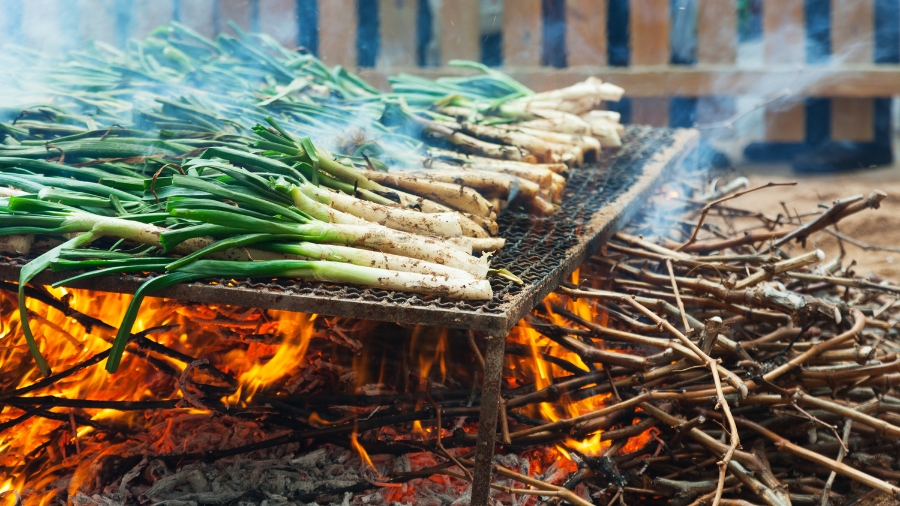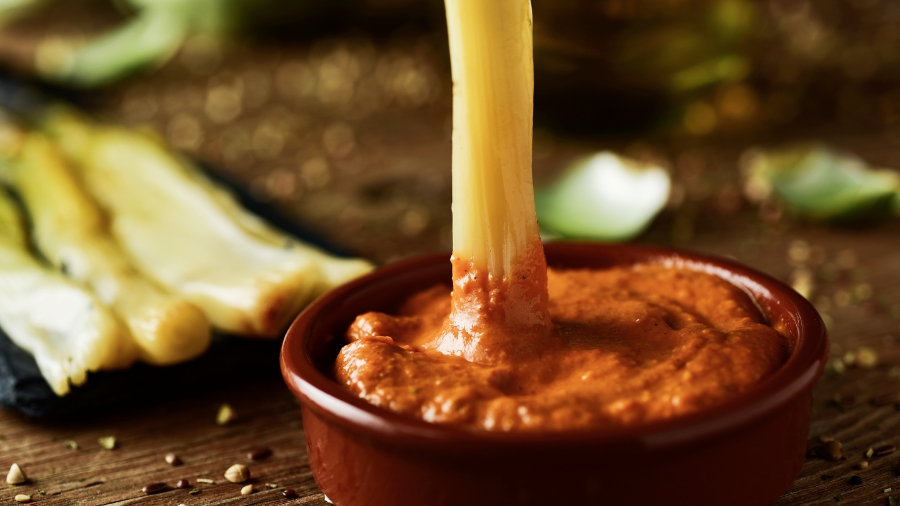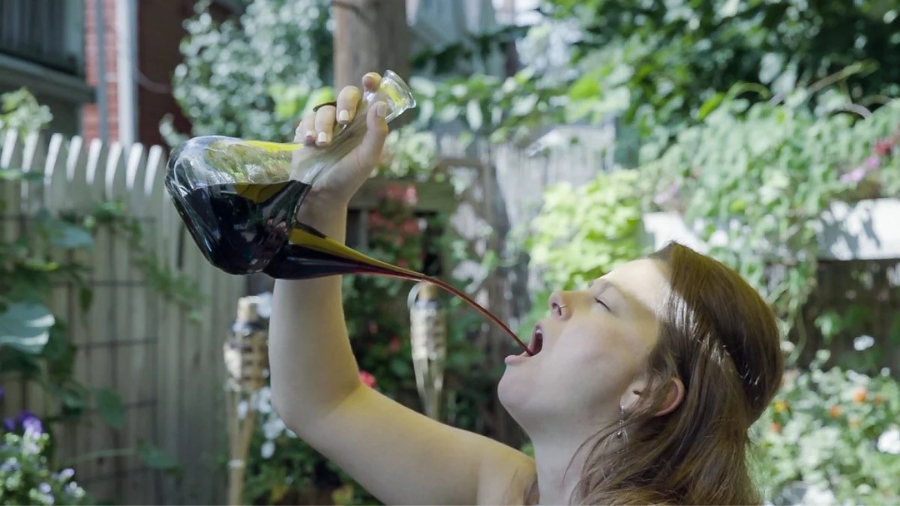| HOME |
| Hotels |
| Apartments |
| Attractions |
| Restaurants |
| Tickets & tours shop |
| Tours |
| Maps & travel planners |
| Airports & transport |
| Maps |
| Events |
| Shopping |
| Contact us |
|
| Calçots and calçotada - food |
Calçots and calçotada BarcelonaTenim Calçots! We have calçots! Calçots are a traditional and very tasty Catalan dish and eating them is a true Catalan tradition. A calçot is a vegetable similar to spring onions or leeks. Calçots are grown in various areas of Catalonia, Spain using special growing techniques to bring out their sweet taste. The season for calçots begins in November and ends in April and but peak season is February and that is when you will see calçots on the menu in Catalan restaurants and find festivals. One of the biggest festivals is the Gran Festa de la Calçotada de Valls in the town Valls. This festival attracts around 40,000 calçot fans and is always on the last weekend of January. Valls prides itself on being origin of the calçot world and the calçots from Valls in Tarragona region are even a registered EU Protected geographical indication (PGI) What are calçots?A calçot is a variety of giant scallion (a variety of young onion) known as "Blanca Grande Tardana" from Lleida. The special growing method is that calçots are grown covered in earth, so that the edible part remains white and the vulva does not develop. They then sprout into something that looks like small leeks. History of calçotsThe origin of Calçots is not documented precisely and is somewhat disputed. A common belief, however, is that that they were developed at the start of the 20th century by a peasant farmer from the area of Valls near Barcelona called Xat de Benaiges. The became known in Catalan as to "calçar". in Catalan this means to "to wear or dress" - and now is an agricultural term which means to cover the trunk of a plant or vegetable with soil. This is where he name calçot is derived. How to eat calçotsThe most popular way to prepare Calçots is to have a outdoor barbeque "calçotada." At a calçotada you grill lots of calçots on a charcoal vine barbeque. Eating them is a dirty, messy and hot business but istripping and eating calçots with your fingers is the best way. Basically you peel off the charred outer skin, dip the inside in a tangy romesco / salvitxada "salsa de calçots" sauce and then lower the sweet succulent white plant into your mouth. It's easiest to get at the the long slim white firm fleshy edible part by holding the base of the calçot then pulling the green leaves aways. After grilling the calçots it is usual to throw some meats, like lamb, pork chops, botifarras and other Catalan sausages called "embutidos," on the grill too.  Porrón - glass wine pitcherA typical way of drinking Catalan "vin negre" red wine, or cava is from a glass porrón wine pitcher. In the Catalan language it's called a porró. The porrón wine pitcher is a fun and communal way to serve wine, or beer or sangria. Fill it then just hold it up and tip it towards you to let a steady stream flow into your open mouth, then pass it on! It takes a little skill, but it’s a fun addition to any gathering especially if you are still practising drinking from a porrón. A porrón typically holds 1 liter of wine. Porrones are famous throughout Spain, but were originally used by winemakers in the autonomous community of Catalonia as a way of sharing wine. The original Catalan porrones were ceramic, but most nowadays are glass.A porrón is often used when eating calçots which is a local vegetable similar to spring onions or leeks. Drinking and sharing wine using a porró is a well loved opportunity for Catalans to go a little mad and bring out the "rauxa" which is the foolish and reckless side of the Catalan personality (rauxa is the opposite of the Catalan "seny" which is consider an ancient inborne Catalan trait of wisdom or common sense.  If you don't have a place to make your own then head for a "merendero" outdoor picnic area which provide barbeque facilities, if you want to try yourself. You can find many merenderos near Barcelona like, Font Les Planes Best places and restaurants in and near Barcelona to eat calçots.Can Cortada, Horta Can Cases, Collserola Park Can Carbonell, Sant Just Desvern Can Travi Nou, Horta district Barcelona Can Marti, Collserola Park Can Sardà, Cerdanyola del Vallès Can Borrell, Sant Cugat Can Jané, Collserola park © Copyright Barcelonayellow.com. Do not copy from this page without permission All rights reserved |
| Last Updated on Wednesday, 12 February 2025 11:47 |
|
|
Wednesday, 10 September 2025

Barcelona Spain - Barcelona Travel Guide - Copyright 2007-2025
Privacy Policy and Cookies • Legal Disclaimer • Copyright
BarcelonaYellow SiteMap 2025
Barcelona Latest News:
COVID-19 - Barcelona Latest News
Barcelona Safety Guide 2025
Barcelona Top 10 attractions 20254
Plan 3 days in Barcelona 2025
About us
About us
Contact us
Privacy Policy and Cookies
Copyright notice
Legal disclaimer
Twitter Barcelona events
Partnerships
Advertising
COVID-19 - Barcelona Latest News
Barcelona Safety Guide 2025
Barcelona Top 10 attractions 20254
Plan 3 days in Barcelona 2025
About us
About us
Contact us
Privacy Policy and Cookies
Copyright notice
Legal disclaimer
Twitter Barcelona events
Partnerships
Advertising
Accommodation
Hotels in Barcelona
Hotels near Fira Exhibition
Hotels near Camp Nou
Hotels near Cruise Ships
Short Stay Apartments
Practical information
Useful visitor information
How to get to Barcelona airport
Cruise Ship Terminals
Barcelona maps
Airport buses
Barcelona metro
Taxis
Travel cards
Hotels in Barcelona
Hotels near Fira Exhibition
Hotels near Camp Nou
Hotels near Cruise Ships
Short Stay Apartments
Practical information
Useful visitor information
How to get to Barcelona airport
Cruise Ship Terminals
Barcelona maps
Airport buses
Barcelona metro
Taxis
Travel cards
Things to do
Top 10 attractions Barcelona
Photos of Barcelona
Restaurant Guide
Nightlife Guide
Things to do in Barcelona
Barcelona beaches
Book tours and tickets
Skiing near Barcelona
Weather Barcelona
Weather in Barcelona
5 day forecast Barcelona
Top 10 attractions Barcelona
Photos of Barcelona
Restaurant Guide
Nightlife Guide
Things to do in Barcelona
Barcelona beaches
Book tours and tickets
Skiing near Barcelona
Weather Barcelona
Weather in Barcelona
5 day forecast Barcelona
Top Festivals and events
Barcelona Events 2025
Christmas in Barcelona
New Years Eve 2025
MWC 2025 Barcelona
Sant Jordi's Day
Barcelona Marathon
Barcelona Half Marathon
Easter
Festa de Gracia
La Merce Festival
FC Barcelona calendar
Barcelona Events 2025
Christmas in Barcelona
New Years Eve 2025
MWC 2025 Barcelona
Sant Jordi's Day
Barcelona Marathon
Barcelona Half Marathon
Easter
Festa de Gracia
La Merce Festival
FC Barcelona calendar
Moving to Barcelona
Moving to Barcelona
Long term apartment rentals
Relocation agencies
Real estate agencies
Spanish schools
Meeting people
Finding work
Yellow pages directory
Partner websites:
DayTripsBarcelona.com
Stepbac.com
PhotoMemoirs.co
Helpfurl.com
Moving to Barcelona
Long term apartment rentals
Relocation agencies
Real estate agencies
Spanish schools
Meeting people
Finding work
Yellow pages directory
Partner websites:
DayTripsBarcelona.com
Stepbac.com
PhotoMemoirs.co
Helpfurl.com
